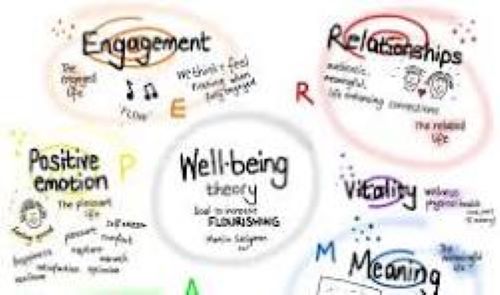Marty Seligiman
Have you creative people lost your mojo during Covid? Could you use a little help in regaining your motivation? Try PERMA
Marty Seligman started it – learning more about him from wikipedia
Martin Elias Peter Seligman (/ˈsɛlɪɡmən/; born August 12, 1942) is an American psychologist, educator, and author of self-help books. Seligman is a strong promoter within the scientific community of his theories of well-being and positive psychology.[1] His theory of learned helplessness is popular among scientific and clinical psychologists.[2] A Review of General Psychology survey, published in 2002, ranked Seligman as the 31st most cited psychologist of the 20th century.[3]
Seligman is the Zellerbach Family Professor of Psychology in the University of Pennsylvania‘s Department of Psychology. He was previously the Director of the Clinical Training Program in the department, and earlier taught at Cornell University.[4] He is the director of the university’s Positive Psychology Center.[1] Seligman was elected president of the American Psychological Association for 1998.[5] He is the founding editor-in-chief of Prevention and Treatment (the APA electronic journal) and is on the board of advisers of Parents magazine.
The PERMA Model represents the five core elements of happiness and well-being designed by American psychologist and educator Martin Seligman. PERMA stands for Positive Emotion, Engagement, Relationships, Meaning, and Accomplishments.
- Positive Emotion – it takes a little more work to see the silver lining. – but there are tools to use to gain that positive Emotion.
- Engagement – being engaged in doing something exciting – sewing, quilting, crafts
- Relationships –see friends and have face to face conversations
- Meaning – Do meaningful work which is different for everyone.
- Accomplishments. –.Things we do because we love to do them.’
It’s a great model to check on yourself – especially when you are feeling less than creative and without spirit.
Alzheimers Walk
Walked Hudson River Bridge to End Alzheimers
The Designer’s Advantage – Speaking with Pictures and Plans
Behind every great design is a story: a spark of inspiration, a client’s dream, a challenge overcome.
Conflict Resolution Starts with Conversation
In design and in business conflict is inevitable. Whether it’s a client who changes direction mid-project or a team member who misses a deadline, tensions can rise fast. But most conflicts don’t come from bad intentions; they come from miscommunication. The good news? Strong communication skills can turn potential clashes into opportunities for collaboration and clarity.
Motivating Your Team Through Powerful Words
Design leadership isn’t just about making creative choices—it’s about motivating the people who bring those choices to life. The right words can turn a project into a movement.
Organizing a Speech Like You Organize a Space: Function Meets Flow
“Design is intelligence made visible.” – Alina Wheeler Designers know that great spaces aren’t accidents; they’re carefully planned for flow, balance, and purpose. The same rule applies to speeches: when your structure works, your message shines. ...
Know your Audience: Tailoring Presentations
Whether you’re pitching to a client, a builder, or a board, one size never fits all. The secret to a powerful presentation lies in knowing exactly who’s in the room—and speaking their language.








